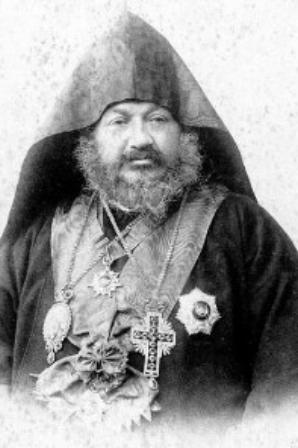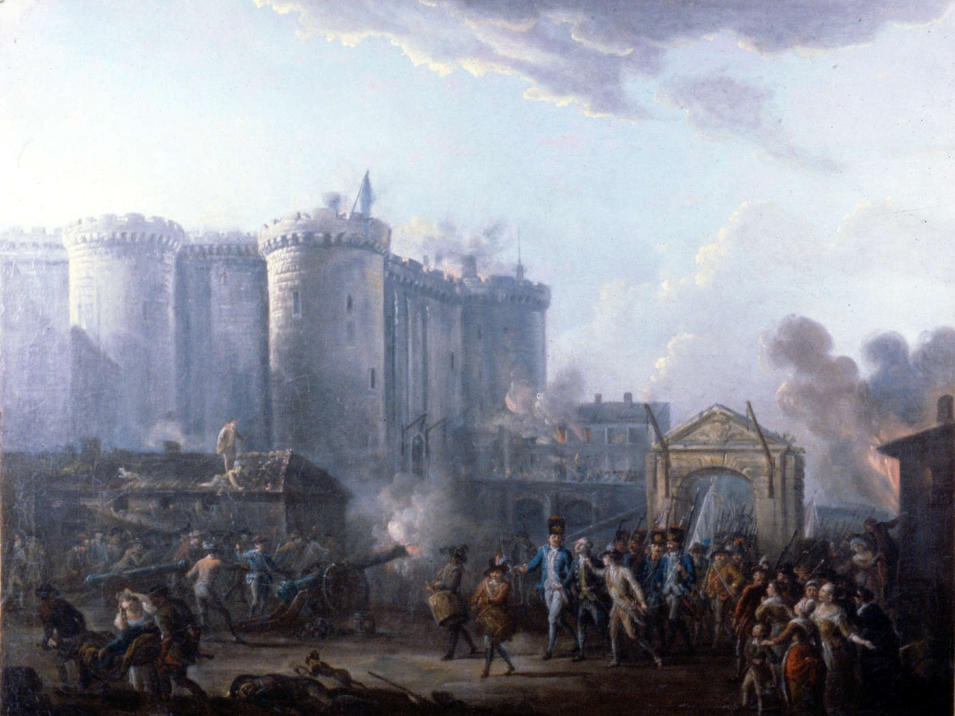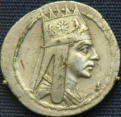


Armenian Jerusalem

Ever
since
the
legend
was
immortalized
in
the
opus
of
the
great
French
writer,
Alexandre
Dumas,
speculation
about
who
the
prisoner
was,
has
been
rampant,
truth
and
fiction
becoming
convoluted,
their
intermingling
making
it
difficult
to
give
credence
to
Dumas'
tale
of
treason
and
intrigue.
The
prevailing
myth
held
that
the
prisoner
was
a
secret
twin
of
the
French
"Sun
King",
Louis
XIV
(1643-1715).
And
last
year,
French
cryptanalyst
Etienne
Bazeries
claimed
to
have
decoded
a
cipher
which
purportedly
revealed
that
the
man
in
the
iron
mask
had
been
a
military
officer,
identified
as
Vivien
de
Bulonde,
who
was
punished
for
his
cowardice
in
the
face of advancing Austrian troops by being forced to wear an iron mask.
But
lingering
in
the
forgotten
annals
of
one
of
Armenia's
greatest
historians,
Maghakia
Ormanian
(184-1918),
lay
a
more
esoteric
plausibility:
it
is
palpable,
in
fact
more
than
possible,
that
the
prisoner
of
the
Bastille
was
actually
an
Armenian
clergyman,
a
prince
of
the
Armenian
Apostolic
church, a lineage paralleling the royal pedigree of Dumas protagonist prince.
Both
princes
were
contemporaries.
Like
the
mythical
twin,
the
Armenian
was
an
innocent,
a
victim
of
political
machinations,
held
in
the
Bastille
and
subjected
to
cruel
and
abusive
punishment.
Dumas
"Man
in
the
Iron
Mask"
could
thus
have easily been inspired by the tale of the misadventures story of the Armenian.
Ormanian
recounts
that
the
clergyman,
Avedik
Yevtogiatsi,
had
been
patriarch
of
Constantinople
and
later
Jerusalem,
around
the
beginning
of
the
18th
Century,
but
had
fallen afoul of French interests because of his staunch anti-Catholic stance.
In
his
monumental
volume
about
the
lives
and
times
of
the
Armenian
Patriarchs
of
Jerusalem,
which
took
him
ten
years
to
compile,
the
late
researcher
and
historian
Haig
A
Krikorian,
quotes
Ormanian
as
noting
that
although
Avedik
had
influential
friends
and
loyal
followers
in
the
then
Ottoman
capital
(Constantinople),
the
machinations
of
the
French
envoy
to
the
sultan's
court,
Charles
Ferriol,
Marquis
d'Argental,
eventually
brought
about
the
priest's downfall.
Ferriol
became
an
"active
and
enthusiastic
supporter
of
the
Jesuit
campaign
to
proselytize
Armenians"
and
encourage
them
to
pledge
allegiance
to
the
Catholic
pope,
rather
than the Armenian Catholicos, the head of the worldwide Armenian Apostolic church.
Despite
the
formidable
opposition
mounted
by
Avedik,
Ferriol
would
not
give
up
and
contrived
to
convince
the
Sultan
to
exile
Avedik
to
an
island
on
the
Mediterranean
coast
of
Syria.
"I will never have peace until somehow I topple him," Ferriol vowed, Ormanian reports.
Clandestinely,
Ferriol
enlisted
the
aid
of
some
malicious
clergy
and
prominent
merchants
to heap more woe on Avedi's head, fighting a vicious running battle with Avedik supporters.
But
the
ebb
and
tide
of
politics,
and
vacillating
political
sympathies,
abetted
by
generous
bribes
to
Turkish
officials,
derailed
Ferriol's
plots
and
saw
Avedik
re-instated
as
Patriarch
of
Jerusalem,
but
not
before
the
Sultan,
exasperated
by
the
French
shenanigans,
had
decreed
that
henceforth
Avedik
would
have
to
relinquish
his
Constantinople
seat
and
relocate
to
Jerusalem.
Stymied,
Ferriol
promptly
counter-attacked.
As
Avedik
waited
for
a
ship
that
would
take
him
to
the
Holy
Land,
he
was
waylaid
by
a
French
vice-consul
named
Bonald
who
bribed
Avedik's
Turkish
escort
to
disappear,
and
made
the
Armenian
believe
that
a
ship
that
had
just
appeared on the horizon was a Venetian vessel bound for Jaffa.
It
was
a
ruse,
and
it
worked.
The
ship
was
actually
heading
west
toward
Messina
on
the
island of Sicily which at that time was under Spanish sovereignty, Krikorian writes.
Avedik
was
handicapped
by
his
lack
of
French
and
could
not
understand
what
was
going
on
between
Bonard
and
his
cohorts,
which
included
the
ship's
captain
who
proceeded
to
strip
Avedik
as
soon
as
he
boarded,
of
all
his
possessions,
including
a
pouch
containing
180
gold
pieces (a hefty sum in those days), his priestly vestments, episcopal ring and pocket watch.
When
they
reached
Messina,
the
captain
handed
Avedik
over
to
a
waiting
French
consul,
Paul
Soulier
"who
unceremoniously
took
him
to
the
Inquisition
prison
on
the
island,
"
where
he remained for several months.
Somehow,
Avedik
contrived
to
smuggle
a
message
to
his
supporters
with
the
help
of
a
sympathetic Greek seaman, alerting his flock that he had been kidnapped.
The
rage
and
consternation
it
spawned,
spurred
the
Sultan
to
give
Ferriol
a
tongue
lashing
and a demand to produce the missing churchman.
But
the
wheels
of
fortune
took
a
wrong
turn
again
when
the
French
king,
at
the
behest
of
Pope
Clement
XI,
ordered
Avedik's
transfer
to
Marseilles
"where
he
was
subjected
to
abject
humiliation."
"They
shaved
his
beard,
removed
his
priestly
garb
and
dressed
him
min
typical
Frenchman's
clothes,"
before
transporting
him
in
secret
to
the
island
prison
of
Mont
Saint
Michel, Krikorian quotes Ormanian.
In
the
dark,
dank
dungeon
there,
Avedik
could
only
ponder
the
ironic
misfortunes
of
a
man whose sole purpose in life was serving a benevolent God.
On
September
8,
in
the
year
1709,
Avedik
was
again
spirited
away
in
secret,
this
time
to
the
Bastille, and his undoing.
And this was where the legend and confusion with the Man in the Iron Mask were borne.
"It
is
impossible
not
to
pause
and
cast
a
backward
glance
on
the
hard
working
yet
painfully
tragic
personality
of
Avedik,
who
at
one
time,
was
confused
with
the
Yergateh
Timagov Mart (man in the iron mask)," Ormanian states, according to Krikorian.
What
transpired
in
the
Bastille
remains
a
mystery.
But
according
to
Armenian
historians,
the
Catholic
church
intervened
again
in
the
person
of
the
cardinal
of
Paris,
Louis
Antoine
Noyal, who entertained high hopes of converting the Apostolic priest.
Avedik
had
been
victimized
by
both
the
Turks
and
French,
had
been
stabbed
twice
and
had
lingered
near
death,exiled
and
then
exalted,
but
in
the
end,
he
suffered
the
same
fate
as Dumas' man in the Iron mask: oblivion.
What
remains
of
him
rests
in
a
grave
in
the
cemetery
of
the
church
of
Saint
Sulpice
in
Paris where he was buried after his death on July 11, 1711, at the age of 54.
(Sydney, July 4, 2015)

the Bastille

For three centuries, sleuths, scholars and conspiracy advocates have extrapolated over
the identity of the "Man in the Iron Mask," the enigmatic prisoner of the notorious Bastille.

OrmaniOrmanian
O

Home | Disclaimer | Access

























